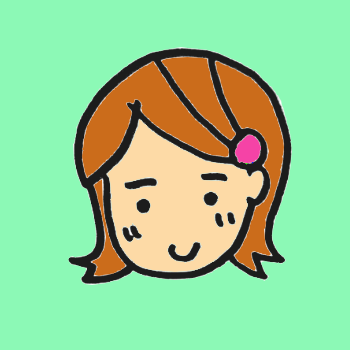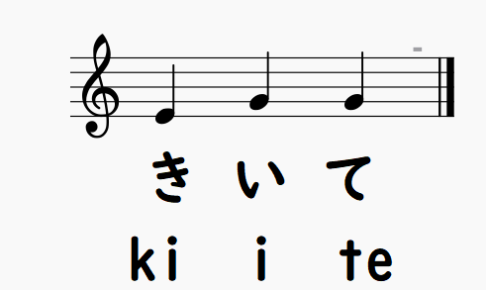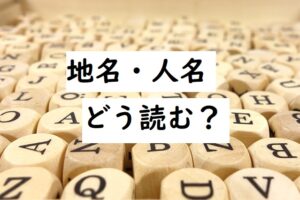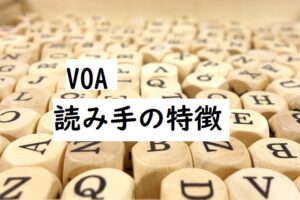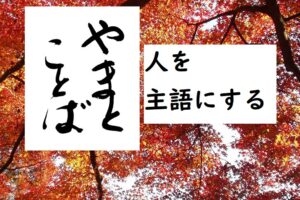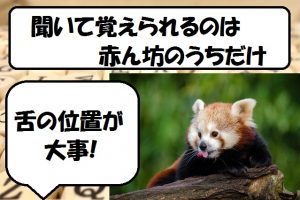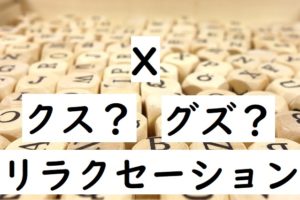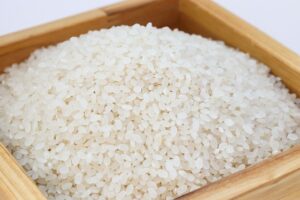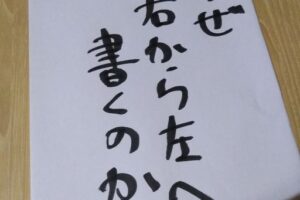目次をご覧になりたい方はクリックしてください→
「long vowel」「doubled consonant」「syllabic nasal」
Japanese special symbols and tones 長音、促音、撥音 (ーっん) ~ 日本語
special symbols and tones
We have other symbols than 「あいうえお (aiueo) 」in Japanese.
long vowel 長音 ちょうおん chō-on (ー)
Extend a vowel just “one” beat (syllable) .
It’s very important.
If you don’t extend a vowel one beat, it will become other word and meaning.
Especially English people treat vowels as only “bridges”.
So they will extend vowels as they like.
Maintain constant beats precisely.
着て wearing (きて) kite
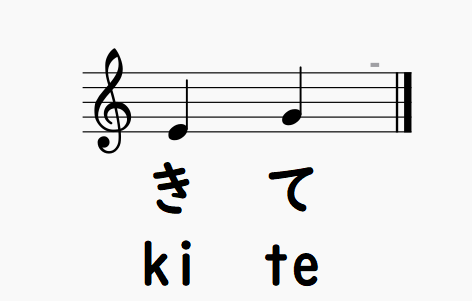
聞いて hearing (きいて) kiite
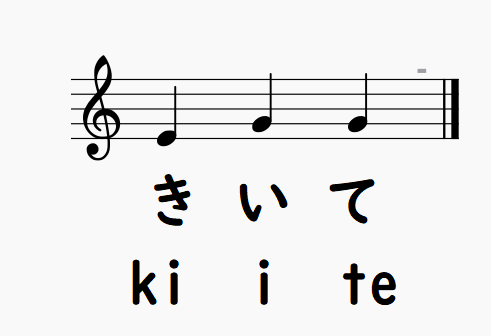
We write like「きいて (kiite) 」,
but we actually pronounce like「きーて (ki:te) 」.
I will explain about it in detail later.
doubled consonant 促音 そくおん (っ)
Small「っ」
It is “one” rest.
Silent, not pronounced.
着て wearing (きて) kite

切手 stamp (きって) kitte
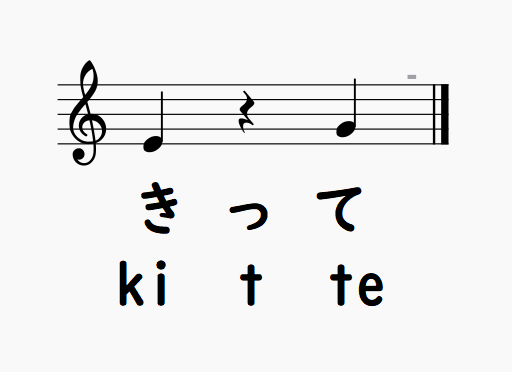
We write like「きって (kitte) 」,
but don’t pronounce 「っ (t) 」in the middle.
Rest “one” beat precisely.
We pronounce like「き○て (ki○te) 」.
To say precisely, you will wait putting your tongue tip behind the teethridge to prepare the following pronunciation “t” , when you will say ki○te.
When you say「かっぱ (kappa、ka○pa) 」, you might close your mouth (lips) for the following pronunciation “p” .
Count just “one” beat holding your breath and waiting the tongue or lips at “t” or “p” position etc. without pronunciation.
The following pronunciation or letter is limited “k, s (sh), t (ch,ts), p” except for loanwords because you hold the breath then explode.
A “s” pronunciation is difficult because you don’t push the tongue against the toothridge completely, I mean there is a small gap between them.
Like 喫茶店 (きっさてん kissa-ten).
We have exceptional sound like「あっ」followed by none.
This pronunciation is [ aʔ ] .
[ ʔ ] is called glottal stop or glottal plosive.
To gasp like「あっ」is glottal stop.
To cough is glottal plosive.
A glottis is a gap between vocal cords [chords] , though you and anyone can’t see it.
opposite tone pattern
There are some other words [meaning] by tone pattern in spite of same sounds like「きて (kite), きって (kitte) 」.
I’ll explain about it at another article.
We also have many homonyms or homophones with same tone pattern like き↗た kita (着た、北) 、く↘も kumo (雲☁、クモ🕷) .
You also have them like light (lamp and feathery) or see and sea.
来て coming (きて) kite
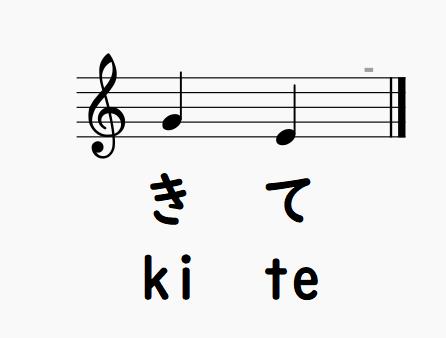
切って cutting (きって) kitte
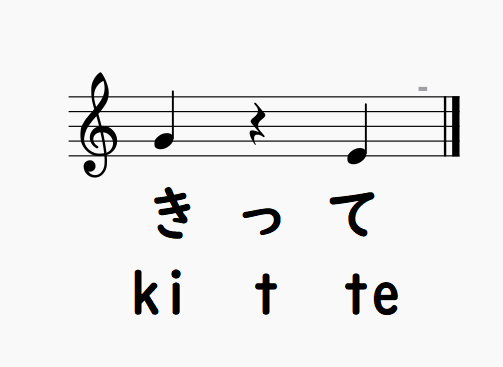
syllabic nasal 撥音 はつおん (ん)
「ん (n) 」is the only consonant letter and sound in Japanese language.
Extend 「ん (n) 」 just “one” beat .
If you don’t extend「ん (n) 」one beat, it will become other word and meaning.
Japanese character is 撥音 (syllabic nasal) not 発音 (pronunciation).
「撥ねる (はねる) 」means “hit away”, but I don’t know why 「撥」is used to「ん」yet.
It might be used because the last stroke of 「ん」flick up to upper-right?
粉 powder (こな) kona
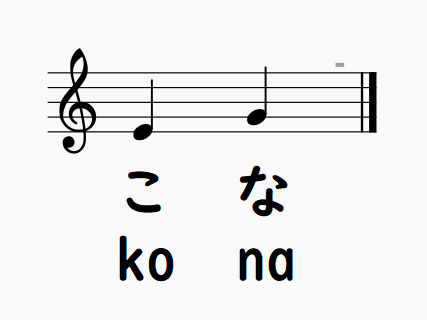
こんな (like this) konna
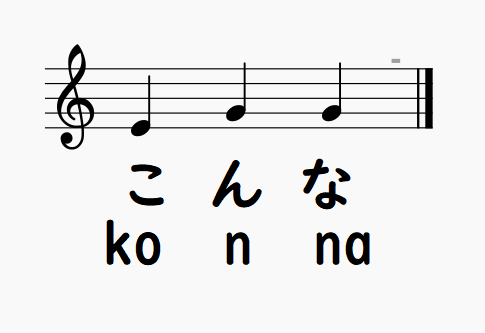
following consonants
Almost all consonants can follow “n” .
「ん」sound will change five patterns to prepare following consonants!
I explain precisely below, please see it.
You might be surprised to know that you use them for different conditions unconsciously.
For example:
ちんぷんかんぷん chinpunkanpun, 本当 (ほんとう hontou) 、こんにゃく konnyaku、新聞 (しんぶん shinbun) 、考える (かんがえる kangaeru) and so on.
to become a long vowel
difference between writing and pronunciation
「ああ (aa) 」→「あー (a:) 」
「いい (ii) 」→「いー (i:) 」
「うう (uu) 」→「うー (u:) 」
「ええ (ee) 」「えい (ei) 」→「えー (e:) 」
「おお (oo) 」「おう (ou) 」→「おー (o:) 」
For example:
さあ、行こう (いこう) と言い (いい) ました
saa, ikou to ii mashita
→ さー いこーと いーました
sa: iko: to i: mashita
空気 (くうき) の読めない先生 (せんせい) だ
kuuki no yomenai sensei da
→ くーきの よめない せんせーだ
ku:ki no yomenai sense: da
大きな (おおきな) 王様 (おうさま)
ookina ousama
→ おーきな おーさま
o:kina o:sama
父さん (とうさん) 母さん (かあさん)
tousan kaasan
→ とーさん かーさん
to:san ka:san
高校生 (こうこうせい)
koukousei
→ こーこーせー
ko:ko:se:
明治 (めいじ)
meiji
→ めーじ
me:ji
大正 (たいしょう)
taishou
→ たいしょー
taisho:
昭和 (しょうわ)
shouwa
→ しょーわ
sho:wa
平成 (へいせい)
heisei
→ へーせー
he:se:
令和 (れいわ)
reiwa
→ れーわ
re:wa
冷静 (れいせい) に行動 (こうどう) しよう
reisei ni koudou shiyou
→ れーせーに こーどーしよー
re:se: ni ko:do: shiyo:
There are many especially in “漢語 kango (漢字 kanji)”, you know.
pitch
The pitch of「ー」can be both same and different as previous vowel.
There is no rules and laws, so you have to learn each word.
For example:
高校生
こ↗こ↘せ→
大きな王様
お↘きな お↗さま
English is more difficult!
You often pronounce “au” like [o:] in English.
While “ou” is often called [au].
auto, out and so on.
“u” will change as in cute [kju:t] cut [kʌt] .
English is a very curious language in the world.
As spelling and pronunciation don’t match each other.
Japanese language is so cute, I mean “easy”, compared with English about pronunciation.
While Japanese grammar might be so difficult for foreigners to learn.
Once we Japanese pronounced 「会う meet (あう au) 」like「おー o:」.
Traditional pronunciation still remains in the west area of Japan.
「会った met (あった atta) 」as a common language is pronounced like「会うた (おーた o:ta) 」in the west.
It’s not a dialect but a traditional Japanese which is still used in the west area of Japan.
Japanese in the east area which has become a common language rather has changed.
Languages live.
So they will always be changing.
The speed of change is faster in the center of a city, while slower in rural areas.
It’s very interesting that Japanese immigrants speak traditional Japanese.
They remain unaffected by a change of urban areas.
As languages live, it’s not a “confusion” but a “change”.
However, I wonder if vogue words which will fade away even in a year.
I repeatedly say;
Hold precisely “one” beat at「ー」「っ」「ん」.
Examples: change of meaning
long vowel (ー)
おばさん obasan (aunt), おばあさん obaasan (grandma)
おじさん ojisan (uncle), おじいさん ojiisan (grandpa)
おにさん onisan (鬼さん goblin), おにいさん oniisan (お兄さん brother)
した shita (下 below, 舌 tongue), しいた shiita (敷いた spread)
きた kita (着た wore), きいた kiita (聞いた heard)
doubled consonant (っ)
いた ita (居た existed), いった itta (言った said, 行った went)
きた kita (来た came), きった kitta (切った cut)
もと moto (元 root), もっと motto (more)
した shita, しった shitta (知った knew)
さか saka (坂 slope), さっか sakka (作家 writer)
syllabic nasal (ん)
てき teki (敵 enemy), てんき tenki (天気 weather)
かばん kaban (bag), かんばん kanban (看板 sign board)
たす tasu (足す add), たんす tansu (箪笥 chest of drawers)
ふだ fuda (札 tag) 、ふんだ funda (踏んだ stepped on)
I’m a professional Japanese teacher.
Please contact me😊
Toshi in italki.
https://www.italki.com/teacher/8455009/japanese
